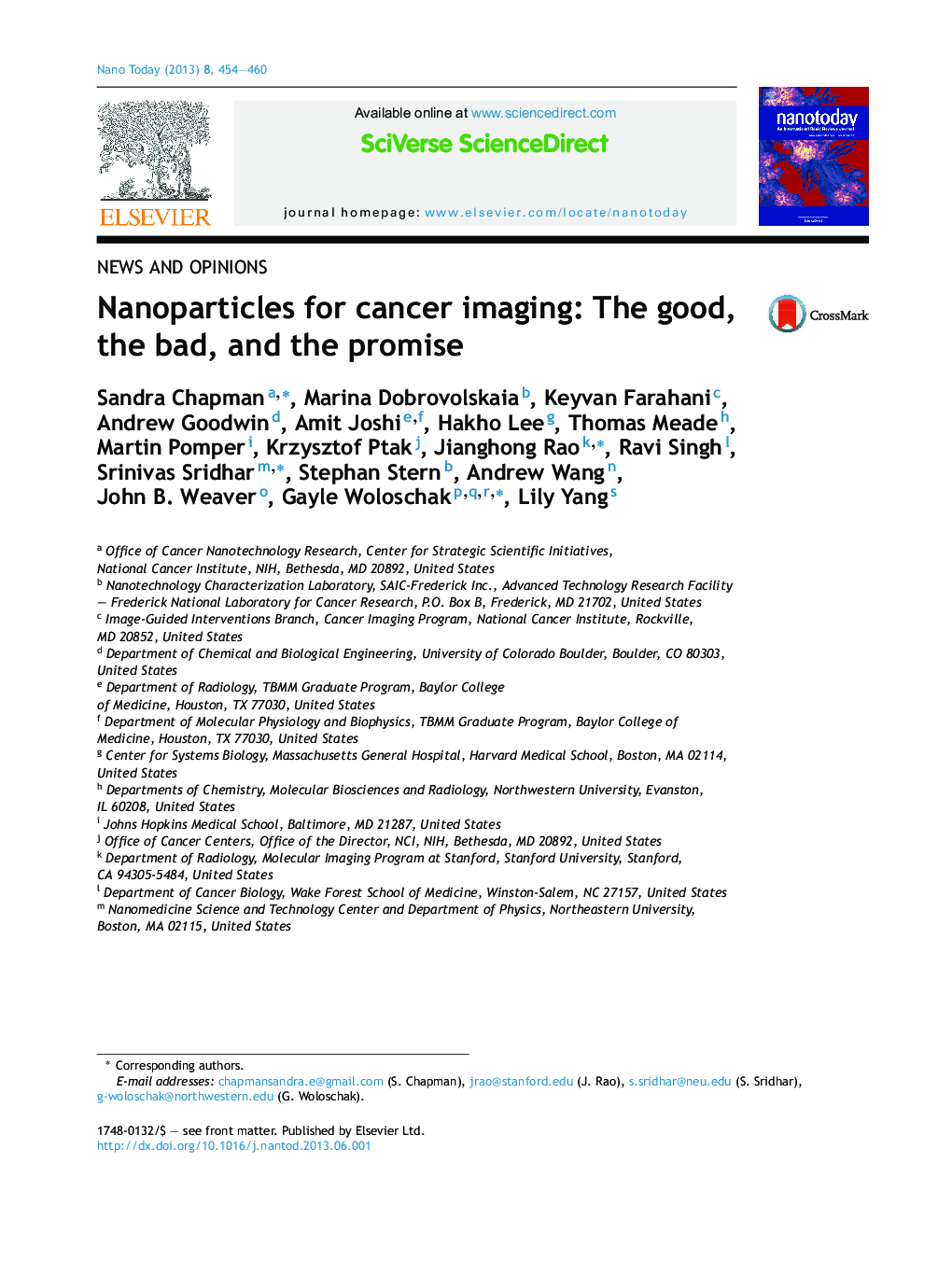| Article ID | Journal | Published Year | Pages | File Type |
|---|---|---|---|---|
| 32388 | Nano Today | 2013 | 7 Pages |
•We review limitations of current nanoparticle imaging probes including: biodistribution of nanoparticles, imaging very small tumors, immunology, toxicology.•We review hurdles on the road to the clinic such as regulatory considerations.•We also review the financial realities.•Finally, we identify the opportunities that exist in the development of nanoparticle imaging probes.
SummaryRecent advances in molecular imaging and nanotechnology are providing new opportunities for biomedical imaging with great promise for the development of novel imaging agents. The unique optical, magnetic, and chemical properties of materials at the scale of nanometers allow the creation of imaging probes with better contrast enhancement, increased sensitivity, controlled biodistribution, better spatial and temporal information, multi-functionality and multi-modal imaging across MRI, PET, SPECT, and ultrasound. These features could ultimately translate to clinical advantages such as earlier detection, real time assessment of disease progression and personalized medicine. However, several years of investigation into the application of these materials to cancer research has revealed challenges that have delayed the successful application of these agents to the field of biomedical imaging. Understanding these challenges is critical to take full advantage of the benefits offered by nano-sized imaging agents. Therefore, this article presents the lessons learned and challenges encountered by a group of leading researchers in this field, and suggests ways forward to develop nanoparticle probes for cancer imaging.
Graphical abstractFigure optionsDownload full-size imageDownload high-quality image (180 K)Download as PowerPoint slide
